Measurable Outcomes & Documented Successes
During 2011 and 2012, Sierra Tucson conducted a pilot outcomes research project to assess and compare changes in self-reported psychological symptoms and functioning before and after receiving treatment at Sierra Tucson. This effort called the “BECK’s Pilot Outcomes Project” (B-POP), used quantified statistical methods to substantiate patients’ qualitative feedback provided at the end of their treatment.
B-POP compared patients’ self-report of depression, anxiety, and hopelessness at admission and at discharge for 873 patients. The analysis used a “within subjects” framework after completion of either a 30-day or 45-day treatment period.
The patients completed the BECKs™ scales for Depression (BDI®-II), Anxiety (BAI®), and Hopelessness (BHS®) during their first week of treatment and then again during their last week of treatment. The BECKs scales are standardized and valid assessments of psychological symptoms and functioning.
We have compiled these outcome findings by program. Please click on the program you wish to review:
- Addictions/Co-Occurring Disorders Program
- Eating Disorders Program
- Mood & Anxiety Program
- Pain Management Program
- Program for Trauma Recovery
Sierra Tucson’s Outcomes Research Program
The opportunity to analyze patient reported psychological functioning through B-POP, confirmed the customary patient anecdotes of psychological improvement. The extent of improvement in mood and decreases in anxiety and hopelessness compelled us to take further steps toward instituting an ongoing outcomes research program in order to investigate patient outcomes, using more rigorous and conventional research methodology.
This fact, in addition to Sierra Tucson’s commitment to providing the best possible care to our patients’ recovery, prompted the development of a newly formed Department of Behavioral Medicine, directed by Dr. Antoinette Giedzinska-Simons, who will oversee the development and management of an ongoing Outcomes Research Program. The vision and aims of this program are aligned with CRC Health Group’s Clinical Advisory Board to implement CRC’s overall vision toward clinical excellence through evidenced-based practices.
The vision of the Outcomes Research Program is to support Sierra Tucson’s commitment to our patients to go above and beyond the time they are in treatment at our facility. Not only will we be evaluating patient progress during residential treatment, but over the course of their long-term recovery. Basing our research methodological infrastructure on Concurrent Recovery Monitoring (McLellan et al., 2005; Brooks et al., 2008), outcomes assessments will include patient quality of life functioning and well-being, stress perception and management, resiliency and coping strategies, recovery/relapse behaviors, and overall mental health status. Part of the longitudinal design will include collaborating with Sierra Tucson’s new “Connection’s Program:” a one-year comprehensive continuing care case-management program for the Addictions/Co-occurring Disorders Program.
We also established the Outcomes Research Program to glean patient-reported outcomes to enhance the efficacy of our programs so that we remain evidenced-based and cutting-edge in our approaches to healing and recovery. Patients consistently share their healing, recovery, and miracle testimonies with us, and as scientist-practitioners, we wish to quantify these improvements in a systematized aggregate approach. Our plan is to disseminate these findings to the general public, clinical professionals, and patients, as well as to Sierra Tucson staff who work with great dedication to the healing of their patients. We aim to celebrate, as well as learn from, our patients’ healing within and outside our program walls.
Based on established operational definitions of outcomes research (Foundation for Health Services Research, 1994; Clancy & Eisenberg, 1998; Maloney & Chaiken, 1999), our Outcomes Research Program will adhere to accepted methods in order to determine patient change, status, and function, through prospective longitudinal methodology that will adhere to rigorous methods, be reproducible, and use reliable and valid measures.
References
1. Beck, Steer, Brown. (1996). Manual for the Beck Depression Inventory–II. San Antonio, TX: Psychological Corporation.
2. Beck, Epstein, Brown & Steer (1988). Beck Anxiety Scale. Journal of Consulting and Clinical Psychology, 56(6), 893.
3. Beck, Weissman, Lester, & Trexler, (1974). The measurement of pessimism: The Hopelessness Scale. Journal of Consulting and Clinical Psychology, 42, 861.
4. McLellan, McKay, Forman, Cacciola, & Kemp (2005). Reconsidering the evaluation of addiction treatment: from retrospective follow-up to concurrent recovery monitoring. Society for the Study of Addiction, 100, 447.
5. Brooks, Carise, Camilleri, Love, Pecorarro, Tassini, & Kemp (2008). Feasibility and utility of a concurrent recovery monitoring system in Delaware state. Treatment Research Institute, Philadelphia, PA
6. Maloney & Chaiken (1999). An overview of outcomes research and measurement. Journal for Healthcare Quality, 21(6), 4.
7. Clancy & Eisenberg (1998). Outcomes Research: Measuring the End Results of Health Care. Science, 282(5387), 245.
8. Foundation for Health Services Research (1994). Health Outcomes Research: A Primer.













